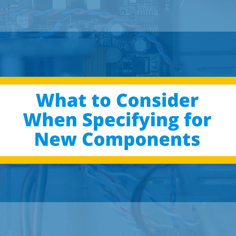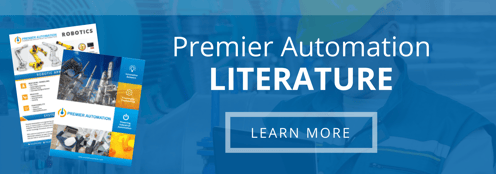 At one point or another, system engineers have to go through the challenging task of replacing a component with a new one. It may be due to a vast amount of reasons such as:
At one point or another, system engineers have to go through the challenging task of replacing a component with a new one. It may be due to a vast amount of reasons such as:
- The manufacturer discontinued support
- Lack of reliability in terms of procurement
- Overly-inflated cost
- Frequent failures
- Technical conflicts
However, replacing a part isn’t that easy, especially when choosing it in the first place required going through a lengthy process. The major problem is the absence of a direct cross-reference pointing to the new item. The entire product specifications have to be dissected and then searched through various manufacturers’ products.
Sensors are the easiest to replace as there are several global standards that manufacturers adhere to while designing them. Connectors have become standardized while output pins are also gaining consistency. Even the mounting specifications are similar, with exception of the physical appearance such as the color. Nonetheless, it is still important to clearly understand the specifications sheet. For instance, Photoeyes may have different configurations depending on the target, which will affect the method and cabling. Similarly, Inductive Proxes would have to be chosen from a variety of categories such as shielded, unshielded, immune to wash-downs, and so on.
Analog and process control sensors have their own set of issues that need to be addressed. Mounting methods and cabling may vary, and replacements have to be carried out with minimum time delay as they lead to loss in productivity.
The physical aspects of replacing a component is also important. Devices like motors have standard mounting and connectivity apparatus. If dimensions such as shaft sizes do not match, the planners must arrange an appropriate coupler that would allow them to line-up. When it comes to automation systems, there are often added complexities and hidden difficulties. Migrating to a lower cost platform may sound as the first, most viable choice, but completely overhauled hardware and software effects a lot of parameters. You’ll need to carry out training, deal with licenses and arrange spare parts to make sure continuity is retained by the system. But sometimes, it becomes suitable to upgrade. For instance, whenever a software or hardware goes obsolete, upgrading it would result in long-term savings. Lost support is one of the major precursors to switching platforms.
Putting all of this to a conclusion, it can be seen that the following must be considered whenever a component needs to be substituted:
- Electrical Interface: parameters such as voltage level, frequency, protocols, communication standards, etc. should be taken into account.
- Physical Compatibility: the space constraints, mounting methodology, and robustness of equipment should be studied before making the switch, so that they are able to withstand the same conditions as the previous hardware.
- Support Compatibility: there’s no need to continue working with a specific line of hardware if an entire department needs to be maintained in-house, for its support.
Interested in learning more? Visit our website www.premierautomation.com, or talk to one of our specialists today.




